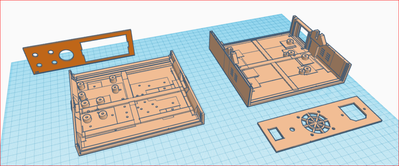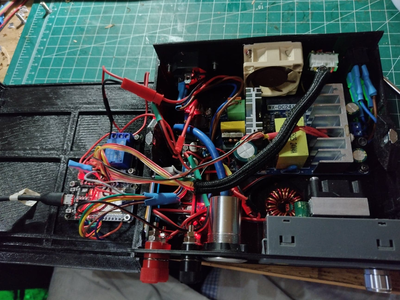regards
Fungreenfox
I see English is your second language so I hope I am clear. It helps if you leave out useless and null statements to reduce the code volume (like beep and empty #include's) also if you can eliminate any code not directly involved in the perceived problem that also helps to reduce code volume. One last thing, statements like
if (beta == gamma){
doSomething;
}
Occupy much less code space when written as
if (beta == gamma) doSomething;
3 lines down to 1
Hope this is of some assistance.
First computer 1959. Retired from my own computer company 2004.
Hardware - Expert in 1401, and 360, fairly knowledge in PC plus numerous MPU's and MCU's
Major Languages - Machine language, 360 Macro Assembler, Intel Assembler, PL/I and PL1, Pascal, Basic, C plus numerous job control and scripting languages.
Sure you can learn to be a programmer, it will take the same amount of time for me to learn to be a Doctor.
Is this for your paranormal research?
First computer 1959. Retired from my own computer company 2004.
Hardware - Expert in 1401, and 360, fairly knowledge in PC plus numerous MPU's and MCU's
Major Languages - Machine language, 360 Macro Assembler, Intel Assembler, PL/I and PL1, Pascal, Basic, C plus numerous job control and scripting languages.
Sure you can learn to be a programmer, it will take the same amount of time for me to learn to be a Doctor.
here are two LM35 temp sensors for arduino esp32 script, placedover the two heatsinks on a power supplier.
Anything seems possible when you don't know what you're talking about.
@zander I have built some ghostscanners, but this one is for a power supplier like the example, but with an esp32 also.
The case is designed by me, and printed at my 3dprinter.
A little video showing the case.
regards
Fungreenfox
@zander Outcommented lines are not seen by the compiled script; only by the editor.
Don't worry about the english 🙂
regards
Fungreenfox
@fungreenfox The point is to reduce what we have to look at. The less the better. Until the volume is cut by 2/3 I will wait.
First computer 1959. Retired from my own computer company 2004.
Hardware - Expert in 1401, and 360, fairly knowledge in PC plus numerous MPU's and MCU's
Major Languages - Machine language, 360 Macro Assembler, Intel Assembler, PL/I and PL1, Pascal, Basic, C plus numerous job control and scripting languages.
Sure you can learn to be a programmer, it will take the same amount of time for me to learn to be a Doctor.
Anything seems possible when you don't know what you're talking about.
regards
Fungreenfox
if you're using an ESP, are you running the LM35 from 3.3V or 5V ? You'll need the 5V and add a capacitor for extra stability.
Anything seems possible when you don't know what you're talking about.
Hi @fungreenfox,
Sorry, I am not clear what these words in your opening message actually mean ... could you clarify please?
The average of temperature in Celcius, is taken by 8 readings over 4 seconds, and it looks stabile.When mounted, there are "spikes" from 25 up to 70 celcius, ......
The first sentence says the readings are "stable" ... suggesting you seeing steady temperature readings.
But the second sentence says you are seeing "spikes" ... from 25 up to 75 Celcius.
These two descriptions appear to contradict each other.
The only clue as to why they might be different is the second sentence starts "When mounted" ... which you will be able to visualise and understand, but as I cannot see your equipment, I can only guess what you mean.
------------
- Are you saying that the readings change from "stable" to "spiking" when you "mount" something?
- If so, what and where are you "mounting".
----------------------------------
Please accept my apologies in advance if I have misunderstood your message ... I have a long history of asking many stupid questions... 🙄
Best wishes, Dave
@will 5V, and a capacitor at 220uf 10V. - it doesn't change amount or size of spikes.
regards
Fungreenfox
Maybe this will help ...
https://bestengineeringprojects.com/lm35-how-to-get-stable-temperature-reading/
Anything seems possible when you don't know what you're talking about.
Normally, its not needed to place brackets around that line, if there is only one. This is for a making it more easy to discover what the if is there for. Brackets there, may be set or left out, if wanted and shoould not have any influence on this.
Strictly speaking, it's probably not a big deal in this particular case, but this is not the default case for every situation, thus better not to include such brackets in general code at all.
Why?
Because, those brackets introduce an ANAONYMOUS SCOPE, and can catch you out in situations you may not be aware of!
They can (and are), also used for beneficial purposes in program design.
Best to avoid adding them if you don't fully understand their function / value.
Cheers




